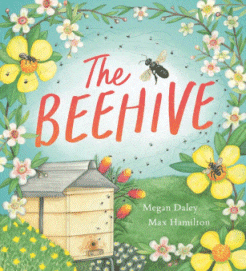
The Turtle and the Flood
The Turtle and the Flood
Jackie French
Danny Snell
HarperCollins, 2023
34pp., hbk., RRP $A24.99
9781460762974
Myrtle the Turtle loves by the creek, swimming in the waterholes and eating the little creatures in summer, and sleeping in the dry leaves under a log in winter. If the creek dries up she buries herself in the silt and the sand to keep cool, and if it rains and the creek flows swiftly, she swims with her strong legs and claws.
However, every now and then she notices a slight change in the water level and the air pressure on the back of her neck, and she knows that that is the signal to move to higher ground. And so she begins to walk uphill… Like the Fire Wombat, her long-evolved instincts, “more accurate than the weather bureau” tell her disaster is coming and it is time to act. But Myrtle is not only saving herself from the impending flood – the other creatures of the bush know that if she is on the move then they must be too.
In a country of frequent fire and flood, our wildlife is often seen as the first and most frequent casualty as so many are estimated to perish. And the statistics can cause great distress to many, particularly our little ones, so as well as telling the story of Myrtle and how her instincts and actions are the triggers for others to act too, this is a story of reassurance that not all is doomed during disasters. While those who know Jackie’s stories for little people most commonly think “wombats”, her home in south-eastern NSW is a haven for all wildlife, including Myrtle and her companions who live in the creek that usually meanders through the space but which can become menacing…

Used with Jackie’s permission…
But there is some peace of mind in knowing that many animals can sense rain, storms and floods well ahead of the event itself and do escape.
Once again, Jackie has used her knowledge, experience and observations of her surroundings to create a story of wonder and hope, and Danny’s illustrations bring that alive symbiotically. But while Myrtle’s story will offer comfort to younger readers, older readers might want to explore further… How do creatures like Myrtle sense the changes? Do humans have the same capacity? Is the Bureau of Meteorology our only warning system? How do our First Nations people predict the weather and what can we learn from them? Does the land need floods in a similar way to its need of fire? And then, on another tangent, how has the impact of humans on the environment increased or reduced the likelihood of the survival of native species during such events? Do structures like roads and fences impede their escape?
I have often said that the best picture books operate on and across many levels, they are never an end in themselves. This is one of those.












